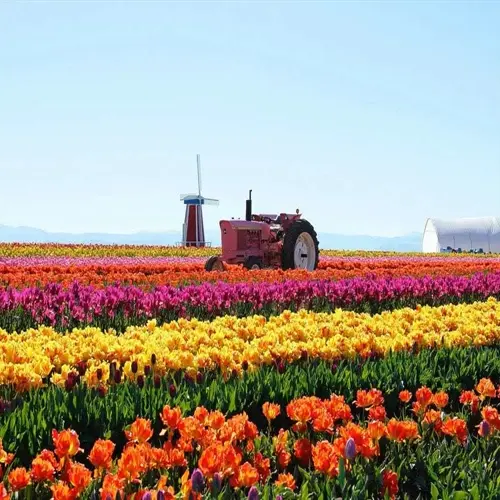Indoor Plant Lighting: A Complete Guide

Written by
Kiana Okafor
Reviewed by
Prof. Charles Hartman, Ph.D.Appropriate indoor plant light plays an important role in facilitating photosynthesis needed for healthy growth and development
The metrics of Photosynthetic Photon Flux Density (PPFD) and Daily Light Integral (DLI) can be measured and used to match an appropriate level of light to individual plant requirements
LED grow lights provide a full spectrum of coverage with a more energy efficient outcome and minimally affect temperature in the space
Change light duration and location with the seasonal dynamics while using timers and height adjustable light stands
Plants often require differentiated light intensities based on species, plant characteristics, light levels classified as low PAR, medium PAR and high PAR will serve as guidelines for your lighting settings
As a general rule, avoid normal lighting mistakes like leggy growth by adjusting your lighting distance every week
Article Navigation
Getting lighting for indoor plants right can make your home a lovely green space. Plants convert light energy into usable energy through the process of photosynthesis. Without the best light, your plants can't grow strong. Many homes have disadvantages, such as dark corners or lower light levels in winter.
During the dark months of the year, grow lights are very much needed to provide an alternative to natural sunlight. There is a constant supply of energy even in areas with less sunlight. Many leggy plants recover under correct lighting within a few weeks. This guide aims to make growing successfully practical and possible for a healthy plant throughout the year.
You will learn to select lighting that meets the specific needs of your plants. You will learn about the location and duration of light, as well as economical solutions. Don't forget that light determines the growth of the plants and the color of the leaves. If you start today, you will notice a marked change in your indoor garden.
Why Light Matters for Indoor Plants
Plants require light for photosynthesis, the critical process that converts water and carbon dioxide into energy. If plants do not receive enough light, they will be unable to produce sufficient glucose for growth. This energy is used in every cellular function from root to leaf growth. Light is the driving force behind your plant's whole biological setup.
Leggy growth caused by stems that have become so long will mean that your plants are starved for light. In their mad race for light, plants are known to stretch towards any available light source. I have successfully rescued many such plants by repositioning them under the proper light. The stems will be thin and unable to support the weight of their own plant. This struggle for energy causes them to grow abnormally.
Chlorophyll Deficiency results in pale or yellow leaves. Plants that suffer a light deficiency turn to chlorophyll for energy, using it up in this process. The green pigment gives way to the yellow tones underneath. Thus, inspect the young shoots, as they are affected most. This was once diagnosed in a case of a fiddle-leaf fig, based solely on observation.
Utilize the hand test to assess your lighting. Extend your hand over your foliage in the brightest daylight. Sharp, crisp shadows indicate strong light. Puddly, fuzzy, obscure shadows are indicative of inadequate light. This is a common test that takes seconds to perform and provides instant information. Use it once a week to observe the changes caused by seasonal variations.
Light Absorption Phase
- Chlorophyll in plant leaves captures photons from sunlight or artificial sources
- Energy splits water molecules into hydrogen and oxygen components
- Oxygen releases into air while hydrogen prepares for sugar production
- This phase requires consistent light exposure daily to function properly
- Light intensity directly affects reaction speed and efficiency
- Plants absorb blue/red wavelengths most efficiently for this process
Energy Conversion Phase
- Carbon dioxide combines with hydrogen to form glucose carbohydrates
- Glucose fuels all plant growth processes from roots to new leaves
- Excess energy stores in stems/roots for nighttime metabolic functions
- Without adequate light, plants consume stored energy until depletion
- Conversion efficiency depends on temperature and light quality
- Optimal temperatures range between 65-75°F (18-24°C) for most plants
Photoperiod Response
- Plants detect day length changes through phytochrome pigments
- Short-day plants flower when nights exceed critical duration
- Long-day plants require shorter nights for blooming initiation
- Day-neutral plants flower regardless of light duration cycles
- Light quality affects flowering more than duration for many species
- Red/far-red light ratios trigger specific developmental responses
Chlorophyll Production
- Blue light stimulates chlorophyll synthesis in plant cells
- Deficiency causes chlorosis (yellowing between leaf veins)
- Magnesium is central component of chlorophyll molecules
- Nitrogen supports overall green pigment development
- Iron deficiency shows similar symptoms but affects new growth first
- Optimal chlorophyll production requires 400-500 nm wavelengths
Light Stress Responses
- High-intensity light causes photoinhibition reducing efficiency
- Plants produce anthocyanins as natural sunscreen protection
- Scorched leaves show bleached or brown crispy patches
- Acclimation occurs when plants gradually adjust to light changes
- Low-light adaptation includes larger thinner leaves
- Excess red light promotes elongated, weak stem growth
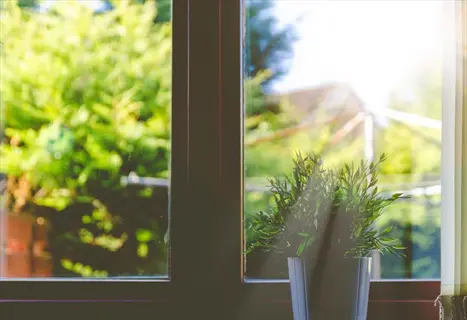
Bright Light Area
- Intense sunlight creates distinct shadows and warm skin sensation
- Ideal for succulents, herbs and citrus needing 6+ hours direct light
- South-facing windows typically provide this strongest illumination level
- Measurements typically exceed 1000 foot-candles or 250 μmol/m²/s
- Supplemental lighting rarely needed except during winter months
- Rotate plants weekly to prevent uneven growth toward light source

Medium Light Area
- Visible light without direct sun heat on skin surface
- Perfect for pothos, philodendrons and monsteras preferring filtered light
- East-facing windows often provide ideal morning illumination conditions
- Ranges between 250-1000 foot-candles or 150-250 μmol/m²/s
- Grow lights beneficial for 4-6 extra hours during cloudy periods
- Dust leaves monthly to maximize available light absorption efficiency
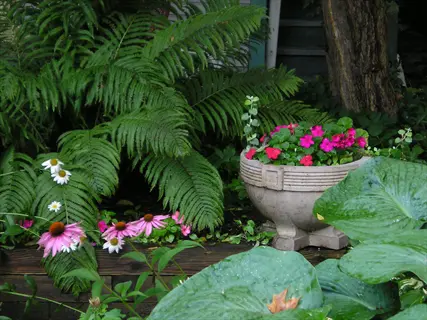
Low Light Area
- Minimal shadows with no detectable warmth on skin
- Suits snake plants, ZZ plants and ferns surviving in dim conditions
- North-facing rooms or interior corners typically have this level
- Below 250 foot-candles or 50-150 μmol/m²/s intensity range
- Requires 12-14 hours daily under grow lights for healthy growth
- Avoid overwatering as plants consume less energy in low light
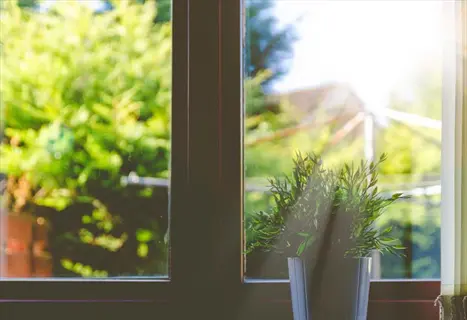
Hand Test: Bright Light
- Intense sunlight creates distinct shadows and warm skin sensation around 85°F (29°C)
- Ideal for succulents, herbs and citrus needing 6+ hours direct light daily
- South-facing windows typically provide this strongest illumination level
- Measurements typically exceed 1000 foot-candles (10764 lux) or 250 μmol/m²/s PPFD
- Daily Light Integral (DLI) should exceed 12+ mol/m²/day for sun-loving plants
- Supplemental lighting rarely needed except during winter months with shorter days

Hand Test: Medium Light
- Visible light without direct sun heat on skin surface
- Perfect for pothos, philodendrons and monsteras preferring filtered light conditions
- East-facing windows often provide ideal morning illumination conditions
- Ranges between 250-1000 foot-candles (2691-10764 lux) or 150-250 μmol/m²/s PPFD
- DLI of 6-12 mol/m²/day supports healthy growth for most foliage plants
- Grow lights beneficial for 4-6 extra hours during cloudy periods or winter seasons
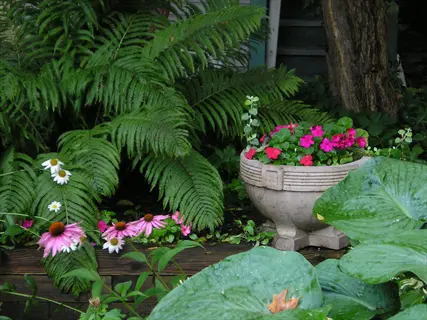
Hand Test: Low Light
- Minimal shadows with no detectable warmth on skin surface
- Suits snake plants, ZZ plants and ferns surviving in dim conditions
- North-facing rooms or interior corners typically have this illumination level
- Below 250 foot-candles (2691 lux) or 50-150 μmol/m²/s PPFD intensity range
- DLI below 3 mol/m²/day requires careful plant selection and management
- Necessitates 12-14 hours daily under grow lights for compensatory photosynthesis
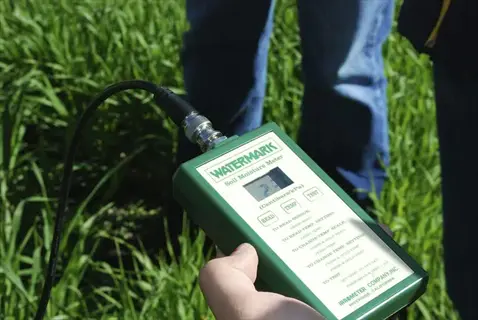
Light Meter Measurement
- Digital devices measure foot-candles or lux for precise intensity readings
- Position sensor at plant canopy height for accurate location assessment
- Take multiple readings throughout day to account for sun movement changes
- Compare readings against plant-specific requirements for optimal placement
- Smartphone apps provide approximate measurements using camera sensors
- Professional PAR meters measure photosynthetic photon flux density (PPFD)
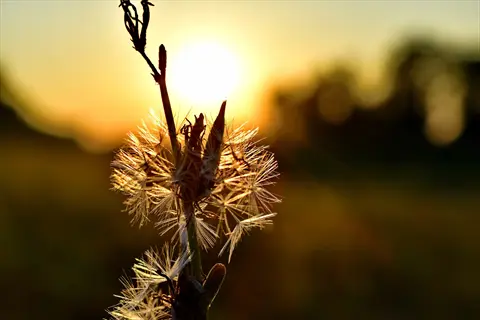
Shadow Clarity Test
- Clear defined shadows indicate high-intensity direct sunlight conditions
- Fuzzy soft shadows suggest medium indirect light quality
- Nearly invisible shadows signify very low light environments
- Test using hands or objects during brightest part of daytime
- Correlates with approximately 1000+ foot-candles for sharp shadows
- Useful quick assessment when meters aren't available
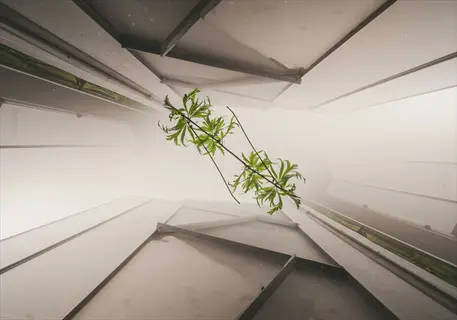
Plant Response Monitoring
- Observe growth direction: stems leaning indicate insufficient light
- Note internode spacing: longer gaps between leaves signal light deficiency
- Check leaf size: smaller than normal suggests inadequate energy
- Monitor coloration: fading variegation means insufficient brightness
- Track growth rate: slower than species typical indicates problems
- Best used alongside other methods for comprehensive assessment
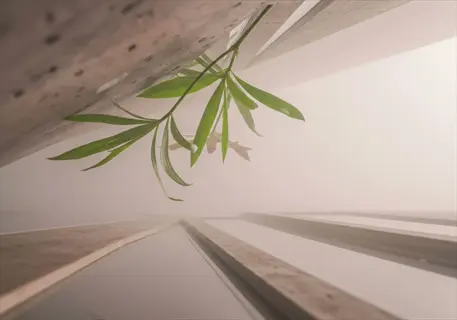
Window Direction Analysis
- South-facing: strongest all-day light year-round
- North-facing: weakest consistent illumination
- East-facing: bright morning light less intense
- West-facing: strong afternoon light more intense
- Seasonal adjustments: lower winter sun changes angles
- Combine with hand test for accurate positioning

Seasonal Light Evaluation
- Summer: more intense light requires shading solutions
- Winter: weaker sun necessitates supplemental lighting
- Spring/Fall: transition periods need monitoring
- Day length varies from 8-16 hours seasonally
- Adjust plant positions quarterly for optimal exposure
- Track DLI changes using online solar calculators
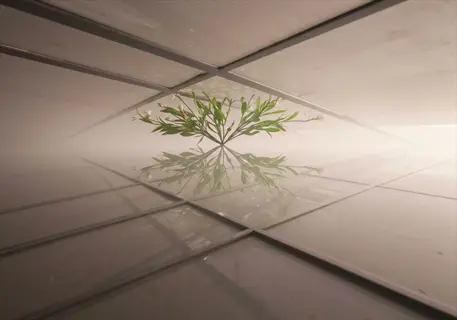
Obstruction Impact Assessment
- Buildings: permanently reduce available light levels
- Trees: seasonal impact from deciduous foliage
- Awnings: block direct light while allowing diffused
- Screens: reduce intensity while maintaining spectrum
- Dust: accumulates on leaves blocking light absorption
- Regularly clean windows and plant leaves monthly

Reflective Surface Enhancement
- Mirrors: strategically placed bounce light deeper
- White walls: increase overall brightness in room
- Metallic surfaces: reflect specific wavelengths
- Water features: create moving light patterns
- Placement: position reflectors opposite light sources
- Boosts effective light by 20-40% without electricity
Choosing the Right Grow Light
Selecting grow lights starts with knowing the differences in their efficiencies. The LEDs have a leading efficiency of 2.9 μmol/J while the fluorescent produces only 1.8 μmol/J and the incandescent only 0.8 μmol/J. This means that the LEDs produce more light per watt of power used. For most setups, I would recommend the LEDs as I have seen the energy savings firsthand.
Two important aspects of light quality are spectrum coverage and heat output. Full-spectrum LED grow lights closely imitate sunlight, while fluorescent grow lights offer partial-spectrum coverage. Incandescent bulbs have limited spectrum coverage. The production of heat is also important. The heat produced by LED grow lights is minimal, resulting in a maximum temperature rise of 5-10°F. This will help in preventing leaf burn.
Placement distances vary considerably from technology to technology. Position LED panels 6-24 inches from plants. Keep fluorescent tubes closer at 4-12 inches. Incandescents should be at least 24 inches away due to the intense heat they emit. Adjust the weekly schedule as plants grow toward the lights.
Energy costs offer clear benefits. A 100-watt LED costs $0.15 a day. For comparable fluorescent lights, the price is $0.25 per unit. Incandescent lights are $0.45 for the same coverage. The savings from LEDs are more than $100 a year, and they last 5-10 times longer than other types.
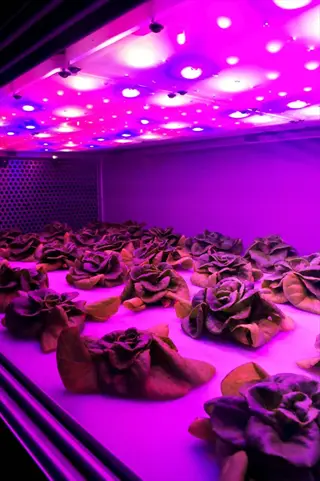
LED Panel Lights
- Samsung LM301H diodes provide uniform 2.9 μmol/J efficiency
- Full spectrum coverage mimics natural sunlight conditions
- Bluetooth/WiFi control enables remote intensity adjustments
- Operates cool at 6-12 inches (15-30 cm) from plant canopy
- Energy cost: $0.15 daily for 12-hour operation (100W)
- Ideal for all growth stages from seedlings to flowering
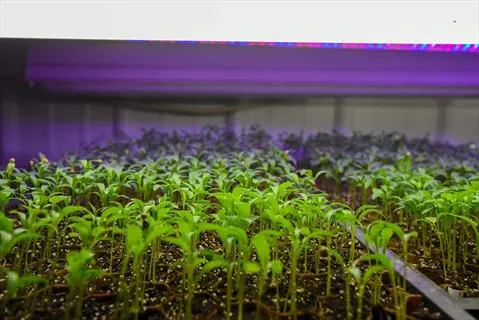
Fluorescent Tube Lights
- T5/T8 tubes offer balanced spectrum for vegetative growth
- Moderate heat requires 12-inch (30 cm) minimum placement distance
- Energy cost: $0.25 daily for 12-hour operation (120W)
- Best for herbs, lettuce and foliage plants like pothos
- Replace bulbs annually to maintain optimal light output
- Bar-style design prevents hot spots on plant surfaces
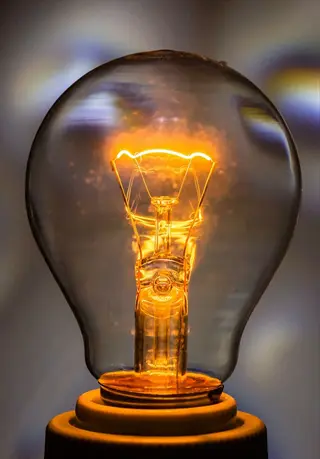
Incandescent Bulbs
- Standard household bulbs with limited red/blue spectrum
- High heat output requires 24+ inch (61+ cm) placement distance
- Energy cost: $0.45 daily for 12-hour operation (150W)
- Suitable only for low-light plants like snake plants
- Risk of leaf burn if placed too close to foliage
- Upgrade to LED for better efficiency and plant results
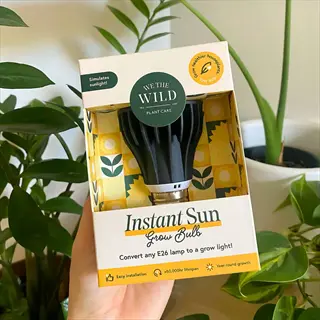
Grow Light Bulbs
- Screw-in design fits standard lamps and fixtures
- Full spectrum options available in LED technology
- Place within 6-18 inches (15-46 cm) depending on plant needs
- Energy cost: $0.18 daily for 12-hour operation (20W)
- Ideal solution for single plants or small groupings
- Limited coverage area makes them impractical for large collections
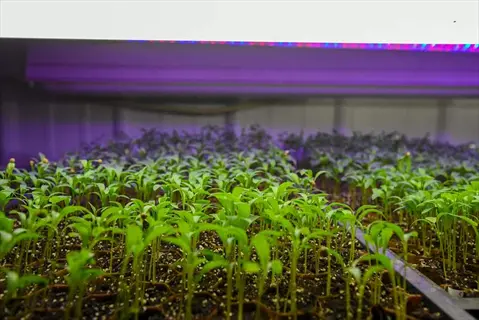
Supplemental Light Bars
- Thin LED bars for under-canopy or side lighting
- UV/IR supplementation enhances secondary metabolites
- Deep red spectrum promotes flowering and fruiting
- Place between main light sources for full coverage
- Energy cost: $0.10 daily for 12-hour operation (15W)
- Perfect for dense canopies like tomato plants or bushes
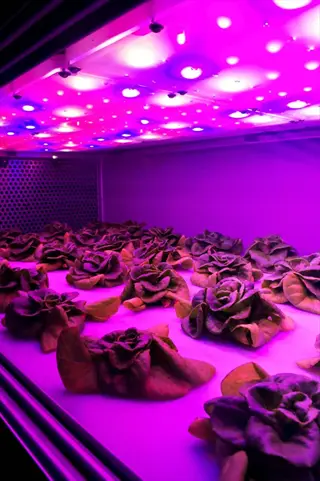
Commercial LED Systems
- High-output systems for large-scale cultivation
- Foldable bar designs allow adjustable coverage area
- Precise dimming controls for different growth phases
- Requires 24-36 inch (61-91 cm) hanging height above plants
- Energy cost: $0.65 daily for 12-hour operation (300W)
- Used for fruiting vegetables and flowering houseplants
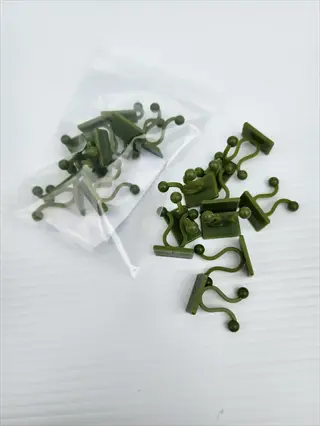
Clip-On Grow Lights
- Adjustable gooseneck design with clamp base
- Directional lighting targets specific plant areas
- Most feature full spectrum LED technology
- Place 6-8 inches (15-20 cm) from foliage for optimal intensity
- Energy cost: $0.08 daily for 12-hour operation (10W)
- Perfect for shelving units or individual potted plants

Vertical Farming Units
- Stackable systems with integrated LED lighting
- Uniform PPFD distribution across multiple tiers
- Waterproof designs for hydroponic environments
- Maintain 4-6 inch (10-15 cm) distance from plant canopy
- Energy cost: $0.30 daily per tier (50W per level)
- Space-efficient solution for herb gardens or microgreens
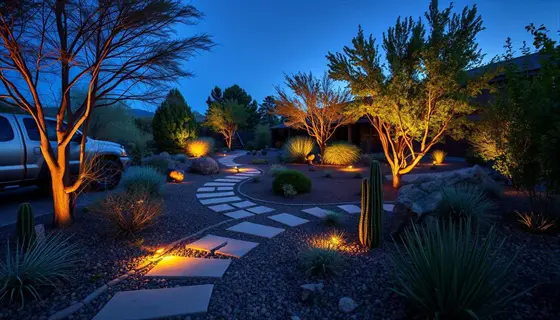
Smart Garden Systems
- All-in-one units with automated lighting schedules
- App-controlled spectrum adjustments for growth stages
- Built-in timers maintain consistent photoperiods
- Height-adjustable fixtures accommodate plant growth
- Energy cost: $0.20 daily for 16-hour operation (30W)
- Beginner-friendly solution with minimal setup required

Magnetic Grow Lights
- Versatile mounting using strong magnetic bases
- Install on refrigerators, shelves or metal frames
- Full spectrum LEDs in compact form factors
- Position 6-12 inches (15-30 cm) from plant surfaces
- Energy cost: $0.12 daily for 14-hour operation (15W)
- Ideal solution for kitchens or space-constrained areas
Setting Up Your Grow Lights
Correct light placement prevents burning leaves and maximizes growth. For LEDs, keep 6-24 inches above plant foliage, depending on intensity. Fluorescent tubes should be kept closer, at a distance of 4-12 inches. Always keep incandescent bulbs at least 24 inches apart to prevent overheating due to the intense heat. I once burnt a monstera and learned this.
Select the hanging mechanisms that best suit your space. Pully systems allow for easy height adjustment. Magnetic bases work well on metal surfaces. For shelving, undercabinet clips conserve space. Always check the weight limitations for fixtures before installing. Safety is as important as function when it comes to your plants.
Set optimum light timers to plant demands. Foliage plants require 10-14 hours of light daily. Flowering plants need 12 hours of light during the blooming period. Seedlings do best with 16-18 hours of light. Allow for 6 to 8 hours of darkness for recovery. This ensures even growth without interruptions.
Increase light height weekly as plants grow. Raise fixtures 2-4 inches each week. Watch for signs of stretching or light stress. I use a simple ruler to track changes in the distance between the canopy and the light. This way, you do not give a sudden shock to your plants' system when they are used to lower lights.
LED Lights
- Seedlings: 24-30 inches (61-76 cm) initially
- Vegetative growth: 18-24 inches (46-61 cm)
- Flowering stage: 12-18 inches (30-46 cm)
- Low-light plants: 24 inches (61 cm) minimum
- High-light plants: 12 inches (30 cm) maximum
- Adjust weekly based on plant response
Fluorescent Lights
- Seedlings: 4-6 inches (10-15 cm) above canopy
- Vegetative growth: 6-12 inches (15-30 cm)
- Avoid closer than 4 inches (10 cm) to prevent burn
- Rotate plants weekly for even exposure
- T5 tubes: 6-8 inches (15-20 cm) ideal
- T8 tubes: 4-6 inches (10-15 cm) optimal
Incandescent/HID Lights
- Minimum 24 inches (61 cm) above plants
- High-pressure sodium: 24-36 inches (61-91 cm)
- Metal halide: 24-30 inches (61-76 cm)
- Use oscillating fans to disperse heat
- Check leaf temperature regularly
- Increase distance by 6 inches if leaf temps exceed 80°F (27°C)
Supplemental Lighting
- Side lighting: 6-8 inches (15-20 cm) from stems
- Under-canopy: 8-12 inches (20-30 cm) below leaves
- Reflective surfaces: position opposite main light
- Interlighting: between plants at 12-18 inch (30-46 cm) spacing
- Angle fixtures at 45° for maximum penetration
- Adjust seasonally for sun position changes
Vertical Setups
- Multi-tier systems: 4-6 inches (10-15 cm) per level
- Stacked LED panels: maintain 6-inch (15 cm) clearance
- Rotate plants daily for uniform growth
- Measure PPFD at each tier for consistency
- Adjust intensity higher for lower shelves
- Ensure 2-4 inch (5-10 cm) air gap above fixtures
Hanging Systems
- Pulley systems: adjustable height with ropes
- Ratchet hangers: secure locking at desired heights
- Ceiling hooks: permanent installation for heavy fixtures
- Ensure minimum 6-inch (15 cm) clearance from ceilings
- Use aircraft cable for fixtures over 15 lbs (6.8 kg)
- Check weight limits for all mounting hardware
Surface Mounting
- Magnetic bases: attach directly to metal surfaces
- Adhesive strips: temporary mounting for lightweight LEDs
- Screw-in brackets: permanent wall/ceiling installation
- Undershelf clips: space-saving for cabinet setups
- Ensure proper ventilation around fixtures
- Keep electrical components away from water sources
Freestanding Options
- Tripod stands: height adjustable from 24-60 inches (61-152 cm)
- Shelving units: integrated lighting for multi-tier setups
- Floor lamps: convertible fixtures with grow bulbs
- Ensure stable base to prevent tipping
- Use sandbags for extra weight in tall setups
- Position away from foot traffic areas
Timers & Automation
- Digital timers: programmable sunrise/sunset simulations
- Smart plugs: app-controlled scheduling from phones
- Dawn/dusk controllers: gradual intensity changes
- Set consistent daily schedules within 15-minute windows
- Program seasonal adjustments for day length changes
- Include backup battery for power outages
Safety Considerations
- UL certification required for all electrical components
- GFCI outlets for installations near water sources
- Secure all dangling wires with cable organizers
- Maintain 3-foot (91 cm) clearance from flammable materials
- Check fixture temperatures during first 48 hours
- Schedule professional installation for 240V systems
Plant-Specific Lighting Solutions
Classifying plants by light needs yields good results. Low-light plants such as snake plants grow well in 50-250 foot-candles. Medium-light monstera need 200-500 μmol/m²/s. High-light plants such as succulents need 500-800+ μmol/m²/s. Providing them with the intensity of light they need will avoid problems with growth. I group mine on shelves according to this classification.
Optimize light for species. ZZ plants: at least 8 hours of fluorescents. Fiddle leaf fig trees: 14 hours under LED lights. Herbs: 12-16 hours of full-spectrum light. You may need to change length of time the lights are on for the flowering phases. Seasonal changes have a tremendous influence upon the schedules.
Alter illumination according to the season. In winter, give plants an additional 2-4 hours of light, particularly those in the grow-room. In summer, heating demands that you move one or two distances larger growing plants. Low cloudy periods often need an additional 20-30% power. I move all my citrus nearer the lights during dark periods.
Employ supplemental lighting in tough situations. North-facing windows necessitate clip-on LEDs. Areas with dense canopies have benefited from underleaf bars. Reflective surfaces can increase available light. My darkest corner now has a healthy pothos, thanks to all of these tricks.
Snake Plant (Sansevieria)
- Thrives in 50-100 μmol/m²/s PPFD (50-250 foot-candles/538-1076 lux)
- Supplemental lighting: 6-8 hours daily of low-intensity LED
- Seasonal adjustment: Add 2 hours in winter, reduce 1 hour in summer
- Placement: North-facing windows or 4-6 feet (1.2-1.8 m) from south windows
- Warning signs: Yellowing leaves indicate too much light
- Best fixtures: Clip-on LEDs or low-wattage grow bulbs
ZZ Plant (Zamioculcas)
- Optimal range: 75-150 μmol/m²/s PPFD (100-300 foot-candles/1076-3229 lux)
- Supplemental: 8 hours of fluorescent or low-intensity LED
- Seasonal: Maintain consistent year-round lighting schedule
- Placement: Interior rooms with indirect light sources
- Warning: Leggy growth signals insufficient light intensity
- Fixtures: T5 fluorescent tubes or LED strips
Pothos (Epipremnum)
- Ideal: 100-200 μmol/m²/s PPFD (200-400 foot-candles/2153-4308 lux)
- Supplemental: 10 hours of medium-intensity lighting
- Seasonal: Increase to 12 hours during cloudy winters
- Placement: East-facing windows or under cabinet lights
- Warning: Loss of variegation indicates light deficiency
- Fixtures: Full-spectrum grow bulbs in table lamps
Peace Lily (Spathiphyllum)
- Requires: 150-250 μmol/m²/s PPFD (250-500 foot-candles/2691-5382 lux)
- Supplemental: 12 hours for flowering, 8 hours for foliage
- Seasonal: Boost light by 30% during blooming season
- Placement: 3-5 feet (0.9-1.5 m) from west-facing windows
- Warning: Lack of flowers suggests insufficient light duration
- Fixtures: LED panels with adjustable height
Cast Iron Plant (Aspidistra)
- Tolerates: 50-120 μmol/m²/s PPFD (50-200 foot-candles/538-2153 lux)
- Supplemental: 6 hours maximum to avoid stress
- Seasonal: No adjustments needed for hardy varieties
- Placement: Dark corners with reflective surfaces
- Warning: Brown tips indicate light/heat excess
- Fixtures: Magnetic grow lights for flexible placement
Succulents & Cacti
- Require 500-800 μmol/m²/s PPFD (1000-2000 foot-candles/10764-21528 lux)
- Supplemental: 14 hours of direct-equivalent LED lighting
- Seasonal: Mimic natural desert photoperiod changes
- Placement: South-facing windows with direct sun exposure
- Warning: Etiolation indicates severe light deficiency
- Fixtures: High-output LED panels at 6-12" (15-30 cm) distance
Citrus Trees
- Optimal: 600-900 μmol/m²/s PPFD for fruiting
- Supplemental: 16 hours during vegetative growth phase
- Seasonal: Increase intensity by 40% in winter months
- Placement: Unobstructed south or southwest exposure
- Warning: Flower/fruit drop signals light stress
- Fixtures: Commercial-grade LED systems
Herbs (Basil, Rosemary)
- Need 400-600 μmol/m²/s PPFD for vigorous growth
- Supplemental: 12-16 hours under full-spectrum lights
- Seasonal: Maintain consistent intensity year-round
- Placement: Directly under grow lights or sunny sills
- Warning: Small leaves indicate insufficient PAR
- Fixtures: T5 fluorescent or LED shop lights
Orchids
- Species-specific: 200-500 μmol/m²/s for phalaenopsis
- Supplemental: 12 hours with morning/evening peaks
- Seasonal: Increase duration during bud formation
- Placement: East windows with morning light exposure
- Warning: Leaf scorch indicates excessive intensity
- Fixtures: Adjustable LED bars with dimming control
Vegetable Seedlings
- Critical: 300-600 μmol/m²/s PPFD for stocky growth
- Supplemental: 16-18 hours under cool-white LEDs
- Seasonal: Start under lights 6 weeks before last frost
- Placement: 4-6" (10-15 cm) below light sources for intensity
- Warning: Leggy stems require immediate adjustment
- Fixtures: Multi-tier seedling starter systems
Common Mistakes and Fixes
Identify lighting flaws indicated by visible discomfort of the plant. Legginess means that there is not enough intensity of the light supplied. Leaves that are bleached indicate too much light. Leaves that are purple on the underside suggest that the spectrum in use is not right. I make these diagnoses every week in my greenhouse. Each of the symptoms indicates a specific condition in the setup needing correction.
Fix light starvation now. Move the plants 6-12 inches towards the light. Upgrade to higher wattage LEDs if necessary. Add reflectors to existing light to increase its power. Measure PPFD each week to maintain the proper levels. Prevention means matching lights to plant needs from the beginning.
Prioritize serious inadequacies first. Injurious heat effects require relocating lights the required distance of 12 inches or more in a few hours. Moderate spectrum problems necessitate the replacement of bulbs and tubes in one week. Minimum height alterations, if needed, can be postponed 3,489 weeks. I give priority to the relative degree of stress on the plants.
Avoid recurrence with easy habits. Set quarterly timers for uniformity and clean reflectors monthly to maintain output. Take weekly growth photos. Calendar reminders make these tasks fun. Regular monitoring prevents problems from damaging plants.
Insufficient Light Intensity
- Visual signs: Leggy growth, small leaves, faded variegation
- Correction: Move plants 6-12 inches (15-30 cm) closer to light source
- Alternative: Upgrade to higher-wattage LED or add supplemental lighting
- Prevention: Measure PPFD with meter, maintain 300+ μmol/m²/s for foliage plants
- Severity: Moderate - correct within 2-4 weeks
- Monitoring: Track new growth compactness weekly
Excessive Light Exposure
- Visual signs: Bleached leaves, brown crispy edges, leaf curling
- Correction: Increase distance by 6-18 inches (15-46 cm) immediately
- Alternative: Install sheer curtain or use dimmer function
- Prevention: Monitor leaf temperature (keep below 85°F/29°C)
- Severity: Critical - correct within 48 hours
- Monitoring: Check for symptom progression daily
Inconsistent Photoperiod
- Visual signs: Irregular flowering, stunted growth patterns
- Correction: Set digital timer to consistent daily schedule ±15 minutes
- Alternative: Use smart plugs with sunset/sunrise simulation
- Prevention: Program seasonal adjustments quarterly
- Severity: Moderate - correct within 1-2 weeks
- Monitoring: Document growth rate bi-weekly
Improper Spectrum Selection
- Visual signs: Purple undersides, weak stems, no flowering
- Correction: Switch to full-spectrum LEDs covering 400-700nm
- Alternative: Add supplemental red/blue bars during key growth phases
- Prevention: Match spectrum to plant type (blue for foliage, red for flowers)
- Severity: High - correct within 1 week
- Monitoring: Observe color development every 3 days
Neglected Height Adjustment
- Visual signs: Light burn on top leaves, shaded lower growth
- Correction: Raise lights 2-4 inches (5-10 cm) weekly as plants grow
- Alternative: Install pulley systems for easy height changes
- Prevention: Measure canopy distance bi-weekly
- Severity: Low - correct within 3-4 weeks
- Monitoring: Maintain 6-24 inch (15-61 cm) gap depending on plant type
Fixture Upkeep
- Clean reflectors monthly with microfiber cloth
- Replace fluorescent bulbs every 10-12 months
- Check LED drivers annually for efficiency loss
- Dust removal improves light output by 15-20%
- Schedule: Quarterly full maintenance checks
- Tools required: Soft brush, isopropyl alcohol
Plant Monitoring
- Measure PPFD at canopy level monthly
- Track growth speed with weekly photos
- Document light duration consistency daily
- Inspect leaf undersides for stress bi-weekly
- Equipment: PAR meter, growth tracking app
- Optimal: Maintain DLI of 10-20 mol/m²/day
Seasonal Adjustments
- Winter: Increase duration by 2-4 hours
- Summer: Add heat mitigation strategies
- Spring/Fall: Recalibrate timers quarterly
- Cloudy periods: Boost intensity 20-30%
- Holiday prep: Verify backup power options
- Checklist: Update settings solstices & equinoxes
Safety Protocols
- Verify UL certification every 6 months
- Check wire insulation annually
- Maintain 3ft (91 cm) clearance from flammables
- Test GFCI outlets monthly
- Requirement: Fire extinguisher nearby
- Compliance: NEC Article 410 standards
Efficiency Optimization
- Group plants by light needs (zoning)
- Use reflective surfaces (90%+ albedo)
- Install automated light sensors
- Implement dawn/dusk ramping features
- Energy saving: Up to 40% reduction
- ROI: 12-18 months for smart systems
5 Common Myths
All indoor plants require direct sunlight through windows to grow properly.
Many houseplants originate from forest understories and thrive in indirect light conditions. Species like snake plants and ZZ plants naturally grow in shaded environments and can develop leaf scorch under direct sun exposure. Full-spectrum LED lights provide balanced wavelengths without natural sunlight's intensity fluctuations, making them superior for consistent growth in interior spaces away from windows. These artificial sources effectively support photosynthesis while preventing light stress in shade-adapted species.
Regular household bulbs provide adequate light for photosynthesis in plants.
Standard incandescent bulbs emit primarily yellow-green wavelengths outside the optimal photosynthetic range, lacking sufficient blue and red spectrums crucial for plant development. They produce excessive heat while delivering less than 1 mol/J efficiency (micromoles per joule), compared to specialized grow lights that deliver 2-3 mol/J. Plants under regular bulbs often show elongated, weak growth due to insufficient PAR (Photosynthetically Active Radiation) between 400-700nm wavelengths necessary for robust photosynthesis and cellular function.
A growing practice to increase plant growth considerably is to keep the grow lights on around the clock.
@Plants must have dark cycles of 6-8 hours to accomplish their necessary respiration and energy processes for their metabolic cycles. Continuous lighting causes their photoperiod response to be interrupted, resulting in photoinhibition, which leads to a considerable reduction in photosynthetic efficiency. Most plants reach the optimum growth stage with 12-18+ hours of lighting, followed by darkness without interruption, so that proper stomatal regulation and food movement can occur through out the vascular system of the plant. This type of cycle can duplicate natural conditions, and operate at a higher growth efficiency.
Blue and red LED lights alone can fully support all plant growth stages.
While blue light promotes vegetative growth and red light stimulates flowering, plants require complete spectrum lighting for balanced development. Green wavelengths penetrate deeper into plant canopies, and far-red light regulates flowering timing. Using only blue and red lights often results in poor nutrient absorption and weak cellular structure. Full-spectrum lighting supports secondary metabolite production and root development by providing all necessary wavelengths between 400-700nm.
Excessive electric consumption and significantly higher utility bills accompany using grow lights.
Modern LED grow lights use 50-60% less power than their predecessors with minimal heat production. A 100W LED panel run 14 hours daily will incur a cost of approximately $0.15 per day ($4.50/mo or $54 yr). The incandescent equivalents will cost $0.45/day ($13.50/mo or $162 yr). The energy-efficient designs yield a higher photosynthetic values per watt used and the pay-back periods are less than 18 months generally, through lowered replacement costs and preventing losses of plants through insufficient lighting.
Conclusion
Sufficient lighting ensures photosynthesis occurs, the key process of plant growth. Without enough light, vegetation can't process energy effectively. This fundamental rule will apply to every indoor garden. Remember, light isn't optional. It's the basis of plant growth in your home.
Remedies must be tailored to the various classes of plants. The light requirement of snake plants is not the same as that of herbs. Succulents need much stronger light than ferns. I match fixtures with the specific requirements of plants in my own collection. Your plants will flourish with proper matching.
Today's lighting provides many benefits beyond growth. LEDs that use less electricity can greatly cut power bills. Healthy plants resist pests more naturally. Your investment pays back through cost savings and reduced death losses of plants. I've noticed power bills decreasing while plant vigor increases.
Start by making one simple change. Move one light a little closer today. Set one timer correctly tomorrow. Small, consistent changes create transformation. I started with just one pothos under new lighting. Now all my plants thrive. It only takes that first step to initiate your journey.
External Sources
Frequently Asked Questions
What is the best light for indoor plants?
Full-spectrum LED grow lights are optimal for indoor plants because they provide balanced wavelengths mimicking natural sunlight. They deliver efficient photosynthesis coverage across blue, red, and green spectrums while generating minimal heat. LEDs outperform fluorescent and incandescent options in energy efficiency and longevity.
Can any LED light be used as a grow light?
Not all LEDs work effectively as grow lights. Plants require specific spectrums:
- Blue light (450nm) for vegetative growth
- Red light (660nm) for flowering and fruiting
- Full-spectrum coverage for complete development
- Specialized grow LEDs provide higher PAR efficiency than regular bulbs
How many hours should grow lights be on daily?
Light duration depends on plant type and growth stage:
- Foliage plants: 10-14 hours
- Flowering plants: 12 hours during bloom
- Seedlings: 16-18 hours
- Succulents: 14-16 hours
- Always include 6-8 hours of darkness for plant recovery
How far should grow lights be from plants?
Placement distance varies by light type and plant needs:
- LEDs: 6-24 inches depending on intensity
- Fluorescents: 4-12 inches
- Incandescent: Minimum 24 inches
- Adjust weekly as plants grow
- Use hand test: No heat should reach leaves
What are signs of insufficient light for plants?
Plants show clear indicators when light-starved:
- Leggy, elongated stems stretching toward light
- Small or undersized new leaves
- Faded variegation patterns turning solid green
- Slow growth or no new growth
- Leaf drop in older foliage
Do grow lights use excessive electricity?
Modern LED grow lights are highly energy-efficient. A 100W panel running 12 hours daily costs approximately $4.50 monthly, using 50-60% less power than traditional options. Their efficiency comes from targeted spectrums that minimize wasted energy as heat while maximizing photosynthetic output.
Can plants survive with only artificial light?
Yes, plants can thrive exclusively under quality grow lights when properly configured. Full-spectrum LEDs provide all necessary wavelengths for photosynthesis. Success requires matching light intensity (PPFD) and daily duration (DLI) to plant species needs while maintaining consistent photoperiods and appropriate placement distances.
How do I choose between LED and fluorescent lights?
Consider these factors when selecting:
- LEDs: Better energy efficiency and spectrum control
- Fluorescents: Lower upfront cost for small setups
- Heat output: LEDs run cooler
- Lifespan: LEDs last 50,000+ hours
- Plant needs: LEDs better for flowering plants
Do plants need UV light to grow?
UV light isn't essential for most houseplants. While some specialized plants benefit from limited UV exposure, standard full-spectrum grow lights provide adequate wavelengths without UV. Focus instead on sufficient PAR (Photosynthetically Active Radiation) between 400-700nm for optimal photosynthesis and development.
How often should grow lights be replaced?
Replacement timelines vary by technology:
- LEDs: 4-6 years (50,000 hour lifespan)
- Fluorescent tubes: 10-12 months
- HID bulbs: 6-12 months
- Signs for replacement: Reduced intensity, color shifts
- Regular cleaning extends usable lifespan
